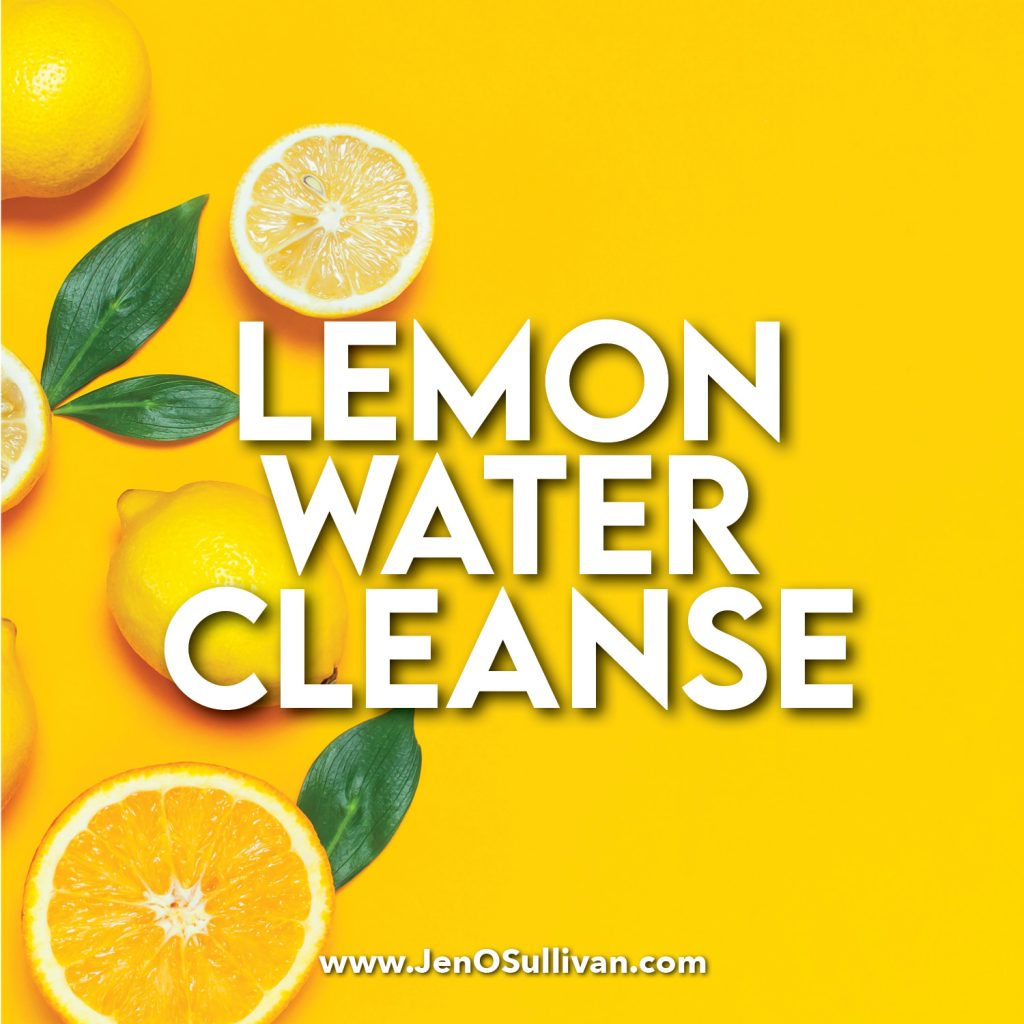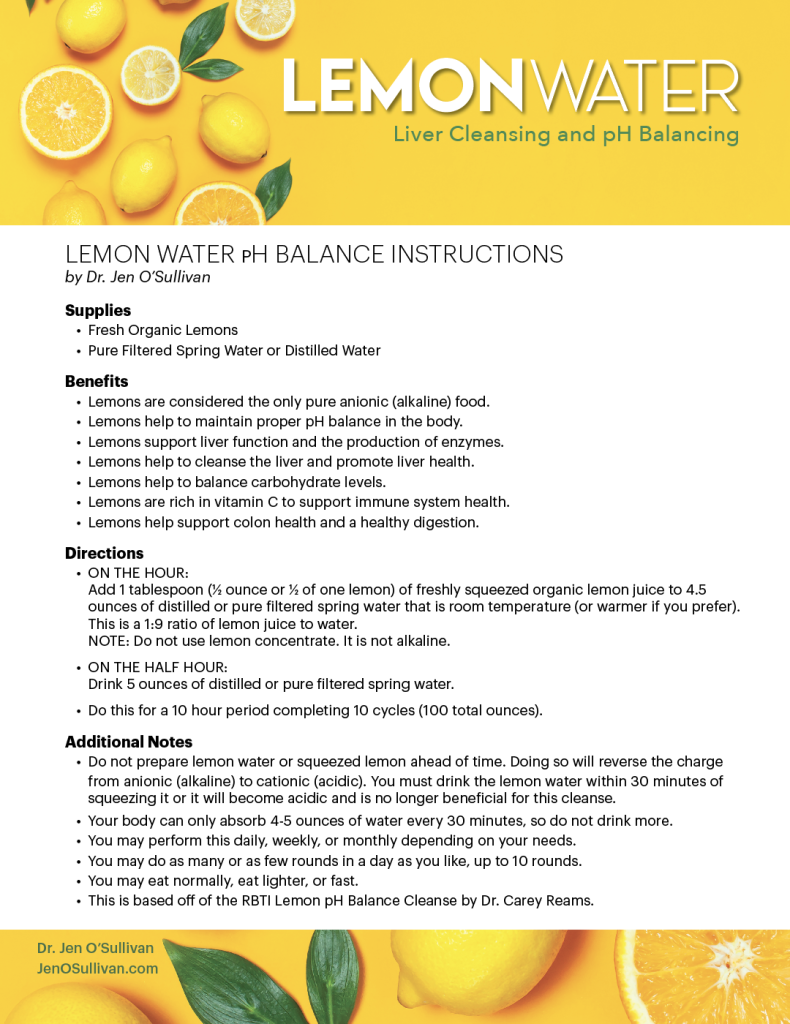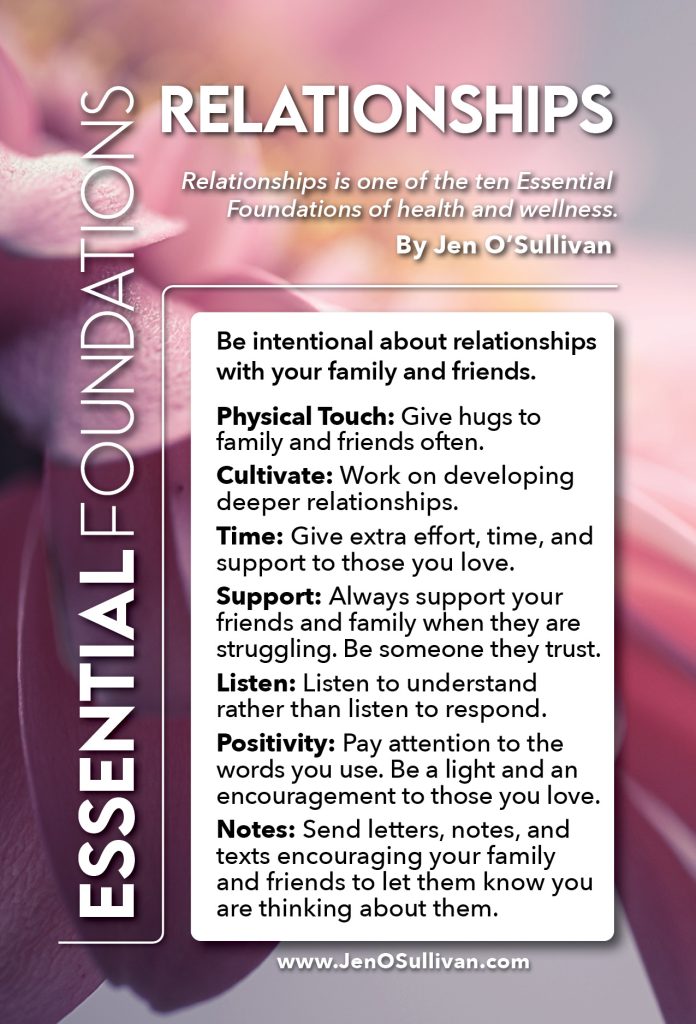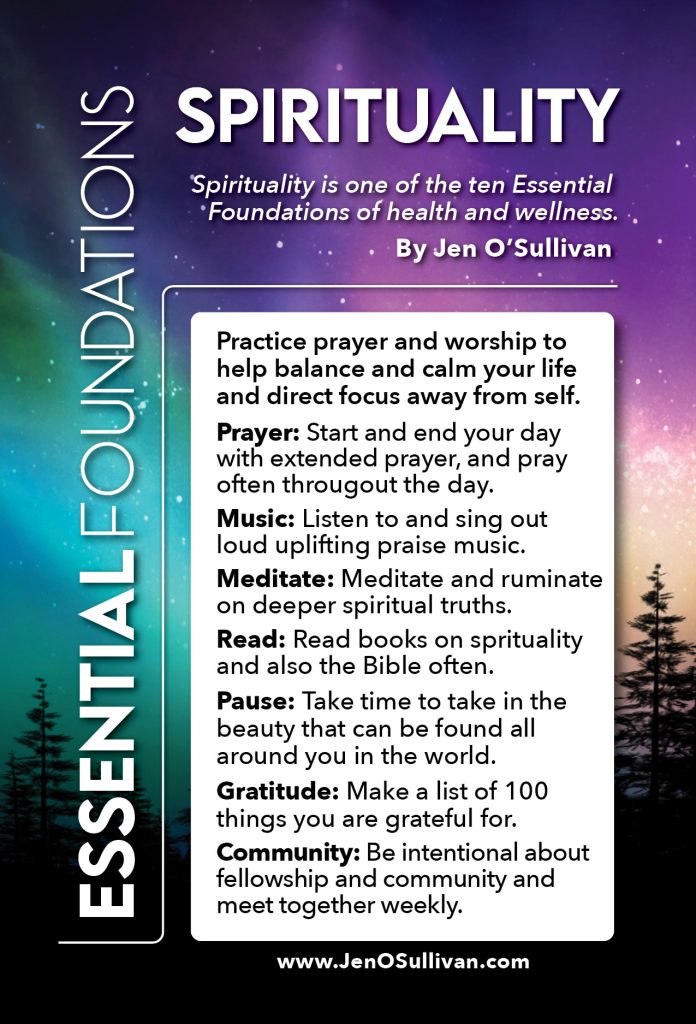
By Jen O’Sullivan
Download printable PDF here.
Lemon Water pH Balance Instructions
Supplies
- Fresh Organic Lemons
- Pure Filtered Spring Water or Distilled Water
Benefits
- Lemons are considered the only pure anionic (alkaline) food.
- Lemons help to maintain proper pH balance in the body.
- Lemons support liver function and the production of enzymes.
- Lemons help to cleanse the liver and promote liver health.
- Lemons help to balance carbohydrate levels.
- Lemons are rich in vitamin C to support immune system health.
- Lemons help support colon health and a healthy digestion.
Directions
ON THE HOUR:
Add 1 tablespoon (1/2 ounce or 1/2 of one lemon) of freshly squeezed organic lemon juice to 4.5 ounces of distilled or pure filtered spring water that is room temperature (or warmer if you prefer).
This is a 1:9 ratio of lemon juice to water.
NOTE: Do not use lemon concentrate. It is not alkaline.
ON THE HALF HOUR:
Drink 5 ounces of distilled or pure filtered spring water.
Do this for a 10 hour period completing 10 cycles (100 total ounces).
Additional Notes
- Do not prepare lemon water or squeezed lemon ahead of time. Doing so will reverse the charge from anionic (alkaline) to cationic (acidic). You must drink the lemon water within 30 minutes of squeezing it or it will become acidic and is no longer beneficial for this cleanse.
- Your body can only absorb 4-5 ounces of water every 30 minutes, so do not drink more.
- You may perform this daily, weekly, or monthly depending on your needs.
- You may do as many or as few rounds in a day as you like, up to 10 rounds.
- You may eat normally, eat lighter, or fast.
This is based off of the RBTI Lemon pH Balance Cleanse by Dr. Carey Reams.





